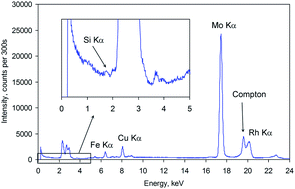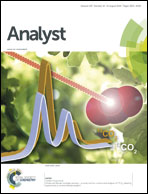Indirect determination of dissolved silicate in surface water using energy-dispersive X-ray fluorescence spectrometry
Abstract
An ultrasound-assisted methodology for the determination of dissolved silicate in water has been developed by combining the miniaturized ion-associated based preconcentration method with energy dispersive X-ray fluorescence spectrometry (EDXRF). The method has been devised for the determination of silicate through molybdenum in the ion-associated complex between 12-molybdosilicate and crystal violet. Because silicate is determined indirectly via molybdenum fluorescent radiation the difficulties resulting from low fluorescence yield and low energy of silicon radiation were successfully overcome. A good ratio of silicon to molybdenum (1 to 41) and a sensitive Kα line of molybdenum make possible the determination of low concentration of silicon in the form of dissolved silicate. Under optimized conditions, good linearity, up to 5 μg of silicon in the form of silicate (r = 0.9990) and a detection limit of 9 ng mL−1 were achieved. The total RSD for the EDXRF determination of silicate, followed by precipitation of the ion-associated complex and its dissolution in a microdrop of isoamyl alcohol, was 6.5%. The enrichment factor was equal to 142. The developed method was used to determine the dissolved silica content in surface waters. The accuracy and repeatability of the proposed procedure were checked by the standard addition method and compared to the results obtained using the ICP-OES technique. The recovery (in the 93–97% range) was satisfactory and indicated the usefulness of the developed procedure.


 Please wait while we load your content...
Please wait while we load your content...